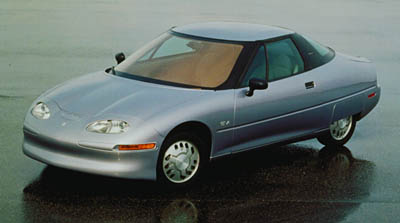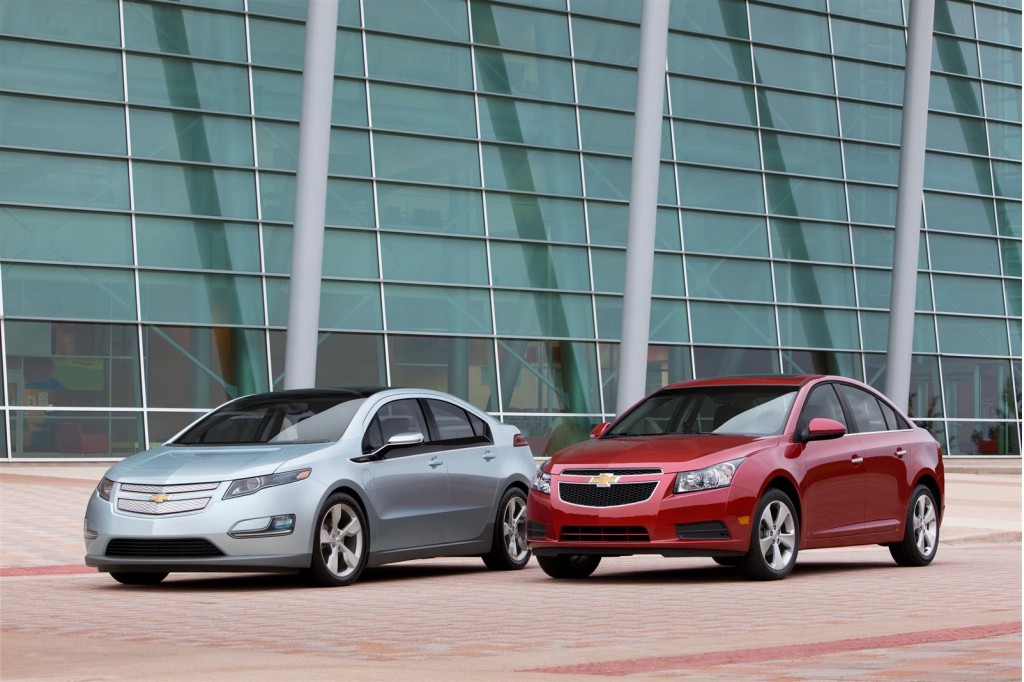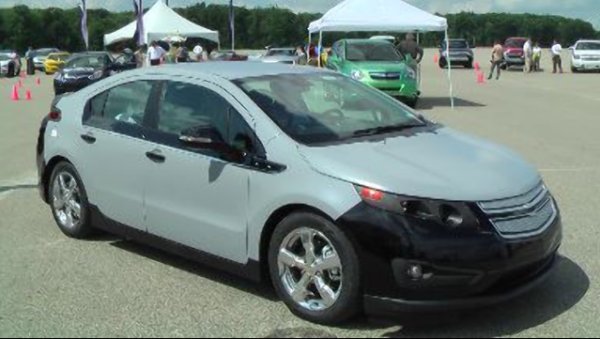Another day, another announcement in the series of carefully timed press releases on the 2011 Chevrolet Volt extended-range electric car. In this case, it's the news that GM's investment in the Detroit-Hamtramck plant where the Volt will be built totals $336 million.
General Motors says that sum brings its total invested in Michigan on Volt-related projects to $700 million, over eight separate facilities.
Battery packs will be assembled in Brownstown Township, tooling comes from Grand Blanc, engine parts are built in Bay City, and the 1.4-liter engine for the Volt's generator set is manufactured in Flint.

1999 GM (Specialty Vehicles) EV1

2011 Chevrolet Cruze and pre-production 2011 Chevrolet Volt

Chevy Volt IVer

2011 Chevrolet Volt

Mini E electric vehicle
Dec 5, 1996
So despite reports of low volume during the first full year of 2011 Volt production--5,000 to 10,000 units--there's clearly major cash being invested. But the news actually triggered a memory, and pushed our thoughts in a different direction.
The day before yesterday Yesterday was the 13th anniversary of the 1996 launch of the GM EV1 two-seater electric car. The demise of the EV1, GM's previous attempt at building and selling a battery-powered vehicle, was notably chronicled in Chris Paine's entertaining (if hardly objective) movie, Who Killed the Electric Car?
GM made relatively few announcements of major investment around the EV1, and there was less national discussion about how to ensure that the U.S. industrial base is positioned to support growth of electric vehicles than there is today. Certainly there were no $25 billion programs of low-interest loans for auto-industry retooling from the Department of Energy.
Has the landscape really changed?
Deja vu all over again
For one perspective, we talked with electric-vehicle guru and commentator Chelsea Sexton, who's been involved with EVs (and writing about them) longer than some bloggers have known how to write. We asked her to compare and contrast her views of the Volt, exactly one year before it's to go on sale, with her views at the same point 14 years ago, just before the EV1 hit the streets.
Sexton is feeling, she said, a strong sense of deja vu in many ways.
"There's a lot of the same sense of, 'We're gonna change the world,' that we have this bright and shiny future just ahead," she mused. "Lots of unabashed enthusiasm, especially among the new people in the [electric car] movement," who she contrasted to "grizzled veterans" like herself who are more cynical about the end-game.
Much work is left
"We know how much work is left," Sexton said, "and our optimism is more guarded." In particular, she cited the importance of infrastructure for pure battery-electric vehicles, citing several missteps by BMW in rolling out its fleet of electric Mini E test cars.
What makes her cautious? "I sense a lack of interest," she said, "in learning from the lessons of the past, really talking to EV owners about how they used them, and why, and how those vehicles changed their lives."
Piss off, veterans?
Sexton noted an attitude among a number of German automakers that, she felt, translated to, "We get it, we know what we're doing, piss off."
"Ironically, GM is now the most interested" of all the car companies with plug-in projects, she said. And she noted that the Volt team has recently chatted with a number of EV1 drivers and let them drive the 2011 Chevrolet Volt.
Sexton hopes to see that process continue, with more of the 500 or so EV1 drivers asked for their impressions and suggestions. They might, she said, point out the benefits--almost "the sex appeal"--that accrue to drivers of such a green and different type of vehicle.

Chelsea Sexton
Optimism vs cynicism
Despite GM's hundreds of millions of dollars of investment, and the optimism of the latest converts to electric cars, Sexton remains wary and in some respects deeply cynical.
She worries that if the 2011 Chevrolet Volt is marketed "just like another car, like a Chevy Cruze" compact, if GM takes a "formulaic approach to marketing," that it won't focus on all the details that provide a good user experience for electric-car neophytes.
The first EV drivers are truly a different breed, she said. While they may be similar to hybrid-car buyers, she draws a clear distinction between them.
"People get smart quick"
Electric-car buyers, she believes, quickly adapt their lives to any limitations of the car, especially those pure battery-electric vehicles with just 100 miles or so of range. "People get smart quick," she said firmly. (The 2011 Volt, of course, uses its gasoline engine to provide electric power to give another 300 miles of range after its 40-mile lithium-ion battery is depleted.)
But Sexton agrees that GM is likely to sell every 2011 Chevy Volt it builds for the first two or three years at least. And in that time, she said, it will become clear whether GM--and other plug-in makers--really "get" how to provide a total user experience that turns every driver into an evangelist for electric transportation.
If it doesn't go well, of course, it would hardly be the first time that an automaker spends hundreds of millions of dollars on a product only to talk away from it. [See EV1 project, GM termination of]
Time will tell. Stay tuned.













